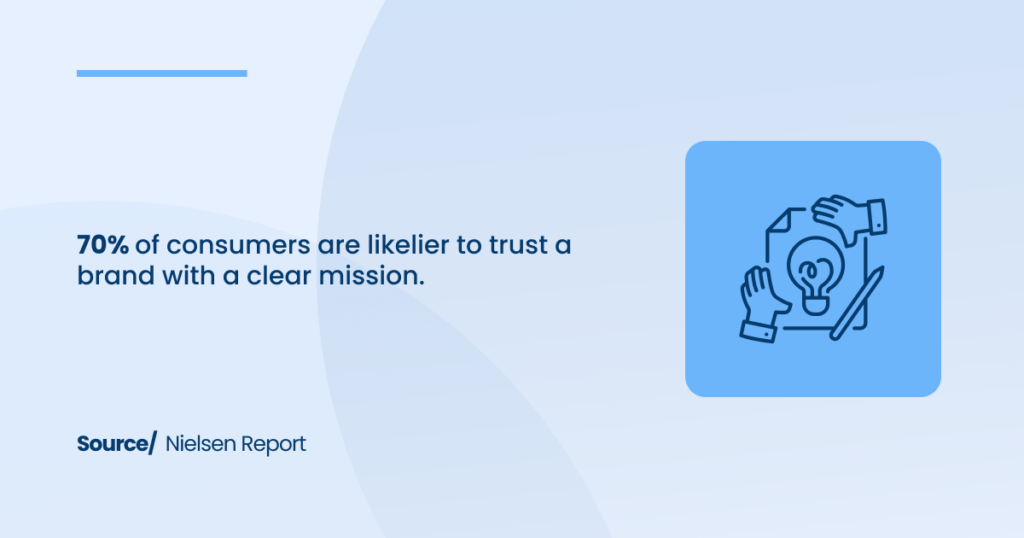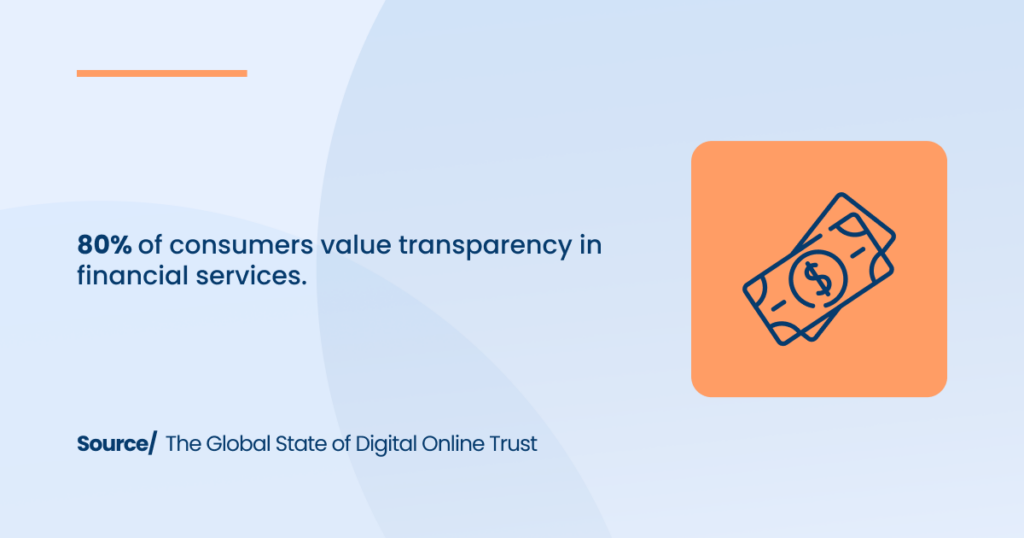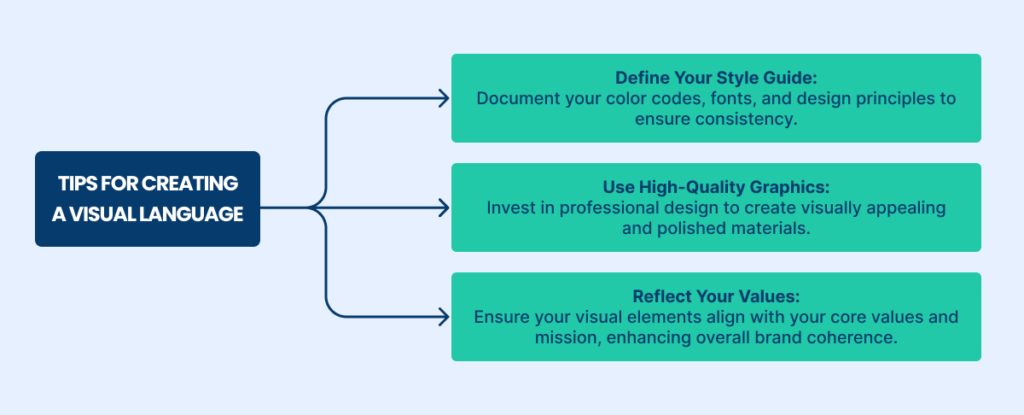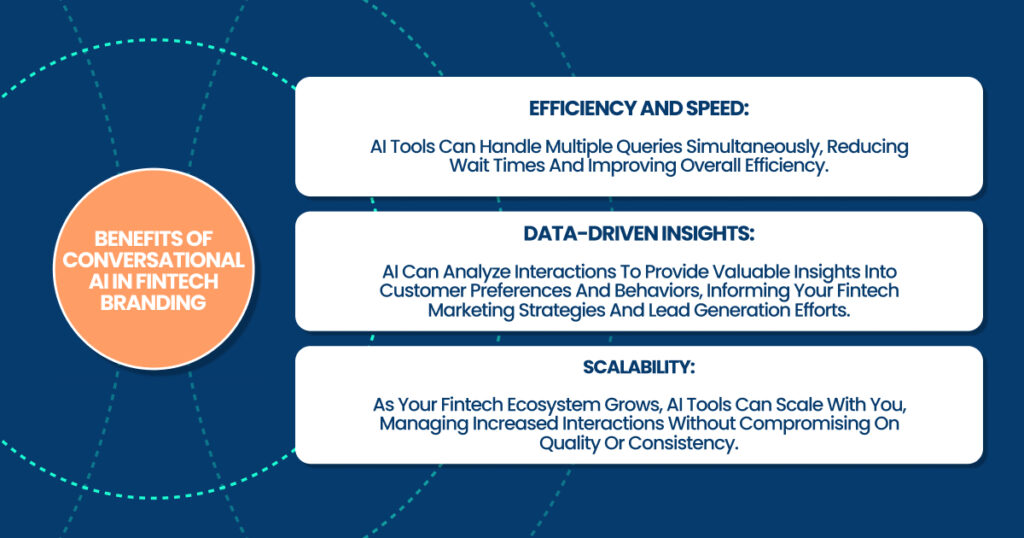Fintech companies are popping up everywhere, each promising to revolutionize how we handle money.
But with so many players in the game, how do you make your brand shine bright and capture your audience’s attention?
Crafting a unique identity isn’t just a nice-to-have. It’s essential for survival and success in this competitive market.
Source: Fintech Transaction Value, Statista
3 Reasons Fintech Branding is a Game-Changer
- Stand Out in a Crowded Market
- Build Trust and Credibility
- Foster Customer Loyalty
Whether launching a new app, rebranding an existing service, or fine-tuning your brand’s voice, understanding the essentials of fintech branding can set you apart from the crowd.
A professional FinTech Marketing Agency will bring expert insights and tailored strategies to elevate your brand to new heights.
Let’s dive in and transform your fintech vision into a compelling brand that attracts customers and builds lasting loyalty.
Know Thy Customer: Decoding Your Audience
In the bustling world of fintech, understanding who you’re serving is the cornerstone of effective branding.
Creating detailed buyer personas helps you tailor your services to meet the specific needs of your target audience.
But how do you get there?
Researching Demographics and Psychographics:
- Demographics: Start by gathering data on age, gender, income, education, and location. For instance, a recent study showed that 65% of fintech users are millennials, highlighting the importance of digital-first solutions.
- Psychographics: Dive deeper into your audience’s values, interests, lifestyles, and financial behaviors. Understanding whether your customers prioritize innovation, security, or cost-efficiency can shape your branding strategy.
Creating Detailed Buyer Personas:
- Persona Development: Develop comprehensive profiles that represent different segments of your audience. Include their goals, challenges, and how your fintech solutions can address their pain points.
- Use of Data: Leverage fintech AI tools to analyze customer data and refine your personas continuously. This ensures your branding remains relevant as market dynamics evolve.
Understanding Customer Needs and Pain Points:
- Pain Point Identification: Identify the common financial challenges your customers face, such as managing expenses, accessing loans, or investing wisely.
- Solution Alignment: Align your branding and marketing strategies to showcase how your fintech solutions effectively resolve these issues. For example, if your target audience struggles with budgeting, emphasize your app’s user-friendly expense-tracking features.
By decoding your audience thoroughly, you can create a fintech ecosystem that resonates deeply with your users, driving engagement and loyalty.
The Emotional Connection: Building Trust Through Empathy
In fintech, trust is paramount.
Financial transactions involve sensitive data; customers need to feel secure and understood. Building an emotional connection through empathy can significantly enhance your brand’s trustworthiness.
Personalized Experiences:
- Tailored Interactions: Use data-driven insights to personalize user experiences. Address customers by name, recommend relevant services, and anticipate their needs based on past behaviors.
- Example: A fintech app that offers customized financial advice based on individual spending patterns can create a more intimate and supportive user experience.
Empathetic Communication:
- Tone of Voice: Adopt a friendly and approachable tone in all your communications. Avoid jargon and use simple language to make financial concepts accessible.
- Active Listening: Engage with your customers on social media, respond to feedback, and show that you value their opinions. This demonstrates that your brand genuinely cares about their financial well-being.
Emotional Branding:
- Storytelling: Share stories that reflect your brand’s mission and values. Whether it’s helping small businesses thrive or enabling individuals to achieve financial independence, relatable stories can create a strong emotional bond.
- Community Building: Foster a sense of community around your brand by encouraging user-generated content, hosting webinars, and creating forums for customers to share their experiences.
By prioritizing empathy and emotional connection, your fintech brand can build lasting trust and loyalty, which is essential for thriving in a competitive market.
Mission Possible: Defining Your Brand’s Purpose
Every successful fintech brand begins with a powerful mission statement—a clear declaration of your company’s purpose and the impact you aim to make.
Your mission is the guiding star, aligning your team and resonating with your audience.
Developing a Clear Mission Statement
A well-crafted mission statement should align with your company’s goals and appeal to your target audience.

How to create one that truly resonates:
- Identify Core Objectives: Define what your fintech aims to achieve. Whether simplifying investments or enhancing payment security, your mission should reflect your primary goals.
- Understand Your Audience: Tailor your mission to speak directly to your customers’ aspirations and needs. For example, if your fintech solution makes financial management accessible, your mission could focus on empowering individuals to take control of their finances.
- Keep It Concise: A mission statement should be memorable and communicate easily. Aim for clarity and brevity to ensure it sticks with your audience.
Example Mission Statement: “To democratize financial services through innovative, AI-driven solutions, making financial management accessible and secure for everyone.”
Partnering with fintech marketing agencies can help refine your mission statement, ensuring it aligns with the latest Fintech trends and Fintech AI advancements.
A clear mission sets the direction, inspires your team, and attracts like-minded customers.
Values That Shine: Establishing Core Principles
Your fintech’s core values are the bedrock of your brand identity, shaping how you conduct business and interact with customers.
Establishing and communicating these values fosters a trustworthy brand that resonates with your audience.
Identifying Your Core Values
Start by reflecting on what your fintech stands for. Common fintech values include:
- Transparency: Open communication about fees, data usage, and business practices.
- Innovation: Commitment to leveraging the latest technologies, such as fintech AI, to enhance user experiences.
- Customer-Centricity: Prioritizing user needs and delivering personalized solutions.

Communicating Your Core Values
Once identified, communicate your values clearly and consistently across all touchpoints:
- Website and App: Showcase your values in your About Us section and through user interfaces that reflect your principles.
- Marketing Materials: Incorporate values into your messaging, highlighting how they influence your products and services.
- Customer Interactions: Train your team to embody these values in every customer interaction, from support calls to social media engagement.
Impact of Core Values:
- Builds Trust: Consistent values reassure customers of your reliability and integrity.
- Guides Decision-Making: Core principles help make strategic decisions aligning with your brand’s mission.
- Enhances Loyalty: Customers are likelier to stay loyal to a brand whose values resonate with them.
Example of Communicating Values: If your fintech values innovation, regularly update your customers about new features and technological advancements. Use blog posts, newsletters, and social media to demonstrate your commitment to staying ahead of the curve.
Incorporating your values into every aspect of your business strengthens your brand identity and creates a unified and motivated team.
Fintech marketing strategies highlighting these values can significantly boost your brand’s appeal and differentiate you from competitors.
Designing Your Fintech Identity
A strong visual identity is essential in the fintech sector, where trust and professionalism are paramount.
Source: Adam Connel Research
Designing a cohesive and appealing visual language sets your brand apart and ensures consistent recognition across all platforms.
Beyond the Logo: Creating a Visual Language
Your visual identity goes far beyond a logo. It encompasses all the visual elements that represent your brand:
- Color Palette: Choose colors that reflect your brand’s personality. For instance, blue often signifies trust and security, while green can represent growth and sustainability.
- Typography: Select fonts that are easy to read and align with your brand’s tone. Modern sans-serif fonts can convey innovation, whereas serif fonts might communicate tradition and reliability.
- Iconography: Use intuitive and consistent icons to enhance user navigation and reinforce brand recognition.
- Design Aesthetics: Maintain a consistent style across all visuals, whether it’s minimalistic, vibrant, or sophisticated. This uniformity helps in creating a recognizable brand image.

Consistency is Key: Maintaining Your Visual Integrity
Maintaining a consistent visual identity across all platforms is crucial for building brand recognition and trust.
Inconsistent visuals can confuse customers and dilute your brand’s message.
Strategies for Maintaining Visual Consistency:
- Unified Design Elements: Ensure all marketing materials, from your website and mobile app to social media posts and print collateral, follow the same design guidelines.
- Regular Audits: Periodically review your visual assets to ensure they adhere to your style guide and make updates as necessary.
- Training and Guidelines: Educate your team on the importance of visual consistency and provide clear guidelines for creating and using brand assets.
Example of Visual Consistency: A fintech brand using a specific shade of blue in its logo, website, app, and marketing materials creates a unified and professional image. This consistency helps customers instantly recognize your brand, whether they encounter it online, on their mobile device, or in print.
Stand Out: Crafting a Unique Value Proposition
In the bustling fintech landscape, standing out is not just an advantage—it’s a necessity.
Your Unique Value Proposition (UVP) distinguishes your brand from the competition and communicates why customers should choose your services over others.
Defining Your UVP:
- Identify Your Strengths: Pinpoint what your fintech company excels at. Whether leveraging fintech AI for predictive analytics, offering unmatched Fintech lead generation services, or providing innovative financial products, knowing your strengths is key.
- Understand Market Needs: Analyze the market to identify gaps your fintech can fill. For example, if b2b fintech marketing shows a high demand for streamlined payment solutions, your UVP might emphasize your ability to simplify business transactions.
- Articulate Your Benefits: Clearly state how your services benefit customers. For instance, “Our AI-driven platform reduces transaction times by 50%, enhancing efficiency for your business operations.”
Differentiating Your Offerings:
- Innovative Features: Highlight unique features that competitors don’t offer. If your fintech uses advanced AI to provide personalized financial advice, make this a core part of your UVP.
- Customer-Centric Solutions: Focus on solving specific customer problems. Whether it’s reducing transaction fees through blockchain technology or offering seamless integration with existing financial tools, emphasize the direct benefits to your users.
Value Unleashed: Communicating Your Benefits Effectively
Once you’ve defined your UVP, the next step is to communicate your benefits effectively.
It’s not just about what you offer but how you present it to solve your customers’ problems better than anyone else.
Techniques to Highlight Your Benefits:
- Storytelling: Use storytelling to illustrate how your fintech solutions have positively impacted users. Share real-life success stories and testimonials to make your benefits tangible.
- Data-Driven Insights: Incorporate statistics and data to back up your claims. For example, “Our users have saved an average of 15% on transaction fees using our platform.” This adds credibility and reinforces your benefits.
- Visual Content: Use infographics, videos, and charts to represent your benefits visually. Visual content can simplify complex information and make your value proposition more engaging.
- Content Marketing: Leverage fintech content marketing strategies to educate your audience on the advantages of your services. Blog posts, whitepapers, and webinars can position your brand as a thought leader and highlight your unique benefits.
Fun Fact: Fintech brands that effectively communicate their benefits experience a 30% higher conversion rate than those that don’t.
By using these techniques, your fintech brand can clearly and compellingly communicate your unique benefits, making it easier for customers to see the value in choosing your services over competitors.
Voice Matters: Building a Memorable Brand Voice
Your brand’s tone of voice is more than words; it’s the personality and emotion behind your communications.
Source: Fortune Business Insights
A consistent and relatable tone in fintech branding can significantly enhance your brand’s connection with its audience.
Creating a Consistent and Relatable Tone:
- Define Your Brand Personality: Decide how you want your brand to be perceived. Are you friendly and approachable, or professional and authoritative? Your tone should reflect this personality consistently across all platforms.
- Audience-Centric Language: Use language that resonates with your target audience. For B2B fintech marketing, this might mean using more technical terms and focusing on efficiency and reliability, while B2C fintech branding might lean towards simplicity and friendliness.
- Consistency Across Channels: Ensure your tone is uniform across all communication channels, including your website, social media, email campaigns, and customer support. This consistency builds trust and reinforces your brand identity.
- Adaptability: While maintaining consistency, adapt your tone to fit different contexts. For example, a formal tone might be appropriate for financial reports, while a casual tone could be used for social media interactions.
From Chatbots to Conversations: Enhancing Interaction with AI
In the age of digital communication, conversational AI tools like chatbots and voice assistants have become integral to fintech branding.

These tools streamline customer interactions and enhance your brand’s voice.
Integrating Conversational AI Tools:
- Personalized Interactions: Use AI to provide personalized responses based on user data. For instance, chatbots can address customers by name and offer tailored financial advice, making interactions more personal and engaging.
- Consistent Brand Voice: Ensure your AI tools reflect your brand’s tone of voice. Whether your brand is friendly and approachable or professional and authoritative, your chatbots should communicate similarly to maintain consistency.
- 24/7 Availability: AI-powered chatbots provide round-the-clock support, enhancing customer satisfaction by offering immediate assistance without human intervention. This not only improves user experience but also builds trust by showing reliability.
Storytelling Magic: Weaving Your Brand Narrative
Crafting a compelling brand story involves sharing your company’s origins, mission, and milestones to build an emotional connection with your audience.
Sharing Your Origins:
- Start with Why: Explain why your fintech company was founded. Was there a specific problem you aimed to solve? For example, “We started to make financial management accessible to everyone, breaking down barriers that traditional banks create.”
- Founders’ Vision: Highlight the passion and vision of your founders. Personal stories about their motivations can humanize your brand and make it more relatable.
Highlighting Your Mission:
- Clear Mission Statement: Your mission should clearly articulate your goal. For instance, “Our mission is to empower small businesses with seamless payment solutions that drive growth and efficiency.”
- Alignment with Goals: Ensure your mission aligns with your company’s long-term objectives and resonates with your target audience’s needs.
Celebrating Milestones:
- Key Achievements: Share significant milestones, such as launching a groundbreaking product, reaching a user milestone, or securing important partnerships. “In 2024, we launched our AI-driven financial advisor, helping over 10,000 users make smarter investment decisions.”
- Growth and Evolution: Show how your brand has evolved, adapting to market changes and incorporating fintech trends to stay relevant.
Fintech marketing strategies that emphasize storytelling can differentiate your brand in a crowded market, making your fintech ecosystem more memorable and impactful.
Heroes of Your Story: Showcasing Customer Success
Your customers are the heroes of your brand story.
Showcasing customer success through testimonials and case studies demonstrates your real-world impact and builds credibility.
Utilizing Testimonials:
- Authentic Voices: Feature genuine testimonials from satisfied customers. Authentic feedback highlights the positive experiences and benefits your fintech solutions provide. For example, “Thanks to [Your Fintech Brand], managing our finances has never been easier. Their intuitive platform saved us hours each week.”
- Diverse Perspectives: Include testimonials from different customer segments to show versatility. Whether it’s a small business owner, an individual investor, or a corporate client, diverse perspectives illustrate the broad applicability of your services.
Digital Dominance: Optimizing Your Online Presence
Search engine optimization (SEO) is crucial for making your fintech brand discoverable in the digital age.
Source: Search engine optimization (SEO) focus areas, Statista
Implementing effective SEO strategies tailored for fintech ensures that your brand appears prominently in search results, driving organic traffic and enhancing visibility.
Keyword Optimization:
- Research Relevant Keywords: Identify and target keywords your potential customers are searching for. Use tools like Google Keyword Planner to find high-volume, low-competition keywords related to fintech, such as “AI-driven financial tools” or “secure online payments.”
- Strategic Placement: Incorporate these keywords naturally into your website content, blog posts, meta descriptions, and headings to improve search engine rankings.
Content Marketing:
- High-Quality Content: Create valuable, informative content that addresses your audience’s pain points and interests. Blog posts, whitepapers, and guides on topics like “Fintech Trends 2024” or “How Fintech AI Enhances Financial Management” can attract and engage readers.
- Regular Updates: Consistently publish fresh content to keep your website relevant and authoritative. Search engines favor websites that are regularly updated with new, high-quality content.
Backlink Building:
- Quality Backlinks: Earn backlinks from reputable websites and industry publications. This boosts your site’s authority and improves SEO rankings. Collaborate with fintech thought leaders to feature your content on their platforms.
- Guest Blogging: Contribute guest posts to popular fintech blogs and websites. This builds backlinks and establishes your brand as an industry expert.
Technical SEO:
- Website Speed: Ensure your website loads quickly; site speed is a key ranking factor. Optimize images, use efficient coding practices, and leverage content delivery networks (CDNs) to enhance performance.
- Mobile Optimization: With more users accessing websites via mobile devices, having a mobile-optimized site is essential. Ensure your website is responsive and provides a seamless experience across all devices.
Mobile First: Designing a Seamless Mobile Experience
In today’s mobile-centric world, ensuring your fintech website and apps are mobile-optimized is essential for providing a seamless user experience.
A mobile-first design enhances user satisfaction, improves your search engine rankings, and drives engagement.
Mobile Optimization Essentials:
- Responsive Design: Ensure your website adjusts to different screen sizes and devices automatically. A responsive design provides a consistent experience whether users access your site on a smartphone, tablet, or desktop.
- User-Friendly Navigation: Simplify navigation for mobile users by using clear menus, easily tappable buttons, and intuitive layouts. Avoid clutter and ensure that important information is easily accessible.
- Fast Loading Times: Optimize your mobile site for speed. Compress images, minimize scripts, and use efficient coding practices to ensure quick load times, which is crucial for retaining users and improving SEO.
Your Fintech Future: Embrace Your Unique Identity
Crafting a unique identity is your gateway to standing out and thriving. As fintech continues to evolve, so should your branding strategies.
[A] Growth Agency will take the responsibility. Our specialists will ensure that every aspect of your fintech branding aligns with the latest industry trends and technological advancements.
Excellence is our standard. We believe in the power of data to inform and drive every strategy, ensuring our actions are as effective as they are innovative.
By harnessing Fintech AI and advanced analytics, we tailor your branding efforts to meet the specific needs of your target audience, optimizing for maximum engagement and Fintech lead generation.
Don’t stay here longer.

